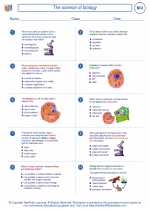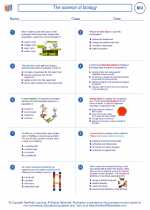Aquatic Environments
An aquatic environment is a type of ecosystem that is dominated by water. There are two main types of aquatic environments: freshwater and marine.
Freshwater Environments
Freshwater environments include rivers, lakes, ponds, and wetlands. These environments have low salt concentration compared to marine environments. They are home to a variety of plants and animals, including fish, amphibians, and insects.
Key Concepts to Study:
- Factors influencing freshwater ecosystems
- Biodiversity in freshwater environments
- Adaptations of aquatic organisms in freshwater
- Human impact on freshwater ecosystems
Marine Environments
Marine environments consist of oceans, coral reefs, and estuaries. These environments have high salt concentration and support a wide range of organisms, including fish, marine mammals, and various types of algae and plankton.
Key Concepts to Study:
- Physical and chemical properties of seawater
- Marine food webs and trophic levels
- Adaptations of marine organisms
- Coral reef ecosystems and their importance
Human Impact on Aquatic Environments
Human activities such as pollution, overfishing, and habitat destruction have significant impacts on aquatic ecosystems. Understanding these impacts and exploring potential solutions is an important aspect of studying aquatic environments.
Key Concepts to Study:
- Pollution in aquatic environments
- Overfishing and its consequences
- Conservation and management of aquatic resources
Study Tips
When studying the topic of aquatic environments, it is important to make use of diagrams, case studies, and real-life examples to understand the concepts better. Additionally, practicing past exam questions and conducting field visits to local aquatic environments can greatly enhance the learning experience.
Remember to stay updated with current research and news related to aquatic ecosystems, as this can provide valuable insights for exams and assignments.
[Aquatic] Related Worksheets and Study Guides:
.◂Biology Worksheets and Study Guides High School. The science of biology

 Worksheet/Answer key
Worksheet/Answer key
 Worksheet/Answer key
Worksheet/Answer key
